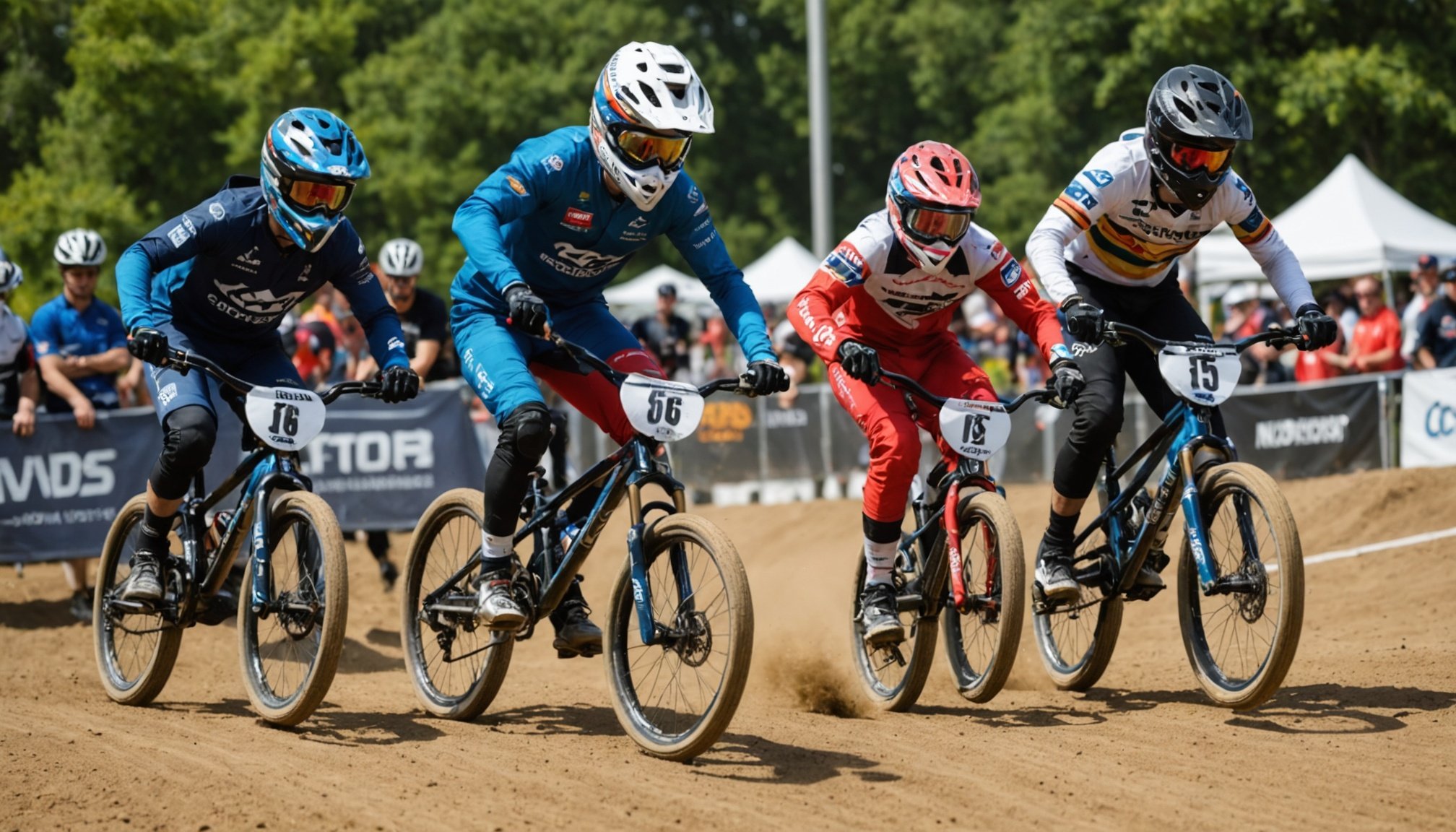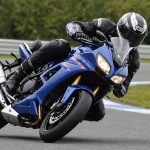Significance of Video Analysis in BMX Racing
Video analysis is increasingly pivotal in BMX racing performance. It enables racers to dissect their racing tactics meticulously, enhancing their competitive edge. In sports, video analysis serves as an indispensable tool to examine performance intricately. It allows athletes to replay, pause, and scrutinise their movements, providing insights into technique refinement and tactical adjustments.
Integrating video analysis into training routines benefits athletes by highlighting areas needing improvement. For BMX racers, it means refining pedal strokes, improving posture, and optimising jump techniques. Coaches use analysis to tailor workouts to individual needs, making training more efficient.
Also to discover : What are the essential skills that young athletes should develop in their early training years?
During races, video analysis leads to improved decision-making. Racers can identify the best lines to take, anticipate competitor moves, and refine their racing tactics through detailed study and simulation. This precision aids in reducing reaction times and increasing strategic awareness.
Ultimately, the influence of video analysis on BMX is transformative, pushing boundaries and elevating performance standards through data-driven insights. As technology evolves, its role in honing racers’ skills will only become more pronounced.
This might interest you : What are the effects of cold weather training on athletic performance and injury risk?
Step-by-Step Guide to Recording Racing Footage
Equipment Setup
Recording race footage requires precise preparation and the right equipment to ensure clarity and effectiveness in analysis. Selecting a high-quality camera suited for BMX racing is essential. Look for models with high frame rates and resolution to capture rapid movements smoothly. Recording techniques begin with stability; hence, using tripods or mounts can prevent shaky footage. Audio capture is less critical but could be considered for capturing the ambiance of the race.
Camera Placement
Strategic camera placement is vital for comprehensive race footage. Position your camera where it can capture important sections of the track, such as starting gates, corners, and jumps. To obtain varied perspectives, multiple cameras should be placed at different vantage points. Optimising camera angles enhances visibility, allowing a thorough review of techniques and form during recording.
Lighting Conditions
Proper lighting is crucial in producing high-quality footage. Outdoor BMX racing typically benefits from natural light; however, it’s necessary to avoid positioning cameras directly facing the sun to reduce glare. Adjust camera settings to compensate for different lighting conditions, ensuring clarity and consistent results regardless of weather or time of day.
Analyzing Video Footage for Performance Improvement
The effective use of video analysis techniques can markedly elevate a racer’s performance. Understanding performance metrics is crucial; focus should be on elements like pedal cadence, air time during jumps, and cornering speed. These metrics provide invaluable insights when dissecting race footage. Breaking down and reviewing footage methodically is essential.
Use slow motion to examine specific moments in detail. Evaluate both successful manoeuvres and errors to guide practice sessions. Implementing feedback loops based on analysis results is beneficial for continuous improvement. After identifying areas for enhancement, create actionable plans and monitor progress in successive races.
To maximise the effectiveness of racer evaluation, regularly compare current performances against past races. This comparison helps highlight improvements and areas still needing attention. With clear targets in sight, training becomes more focused and rewarding.
Case Studies of Successful BMX Racers Using Video Analysis
Exploring real-life applications of video analysis in BMX racing offers valuable insights into its transformative effects. In these case studies, we will examine how Racer A and Racer B harnessed video analysis for remarkable success.
Case Study: Racer A
Racer A capitalized on video analysis to refine their racing tactics. By studying their footwork and posture, they embarked on a tailored training regime focusing on pedal efficiency and reducing drag. This led to a significant boost in BMX racing performance, allowing them to consistently outperform competitors.
Case Study: Racer B
Racer B’s strategy involved leveraging video analysis techniques to enhance cornering skills. By analysing footage of their corner approaches and exits, Racer B pinpointed inefficiencies in their technique. Subsequent practice sessions were informed by these insights, leading to mastery of tighter, faster cornering, which proved crucial in races.
Lessons Learned from Case Studies
Successful racers often share common traits: dedication to continuous improvement and a keen eye for detail. By systematically utilising video analysis, they transform racing weaknesses into strengths. These stories underscore the potential of informed training approaches for elevating a racer’s game.
Common Mistakes in Video Analysis and How to Avoid Them
In the realm of video analysis for BMX racing, certain common mistakes can hinder effective racing tactics development. To ensure optimal outcomes, recognising and addressing these video analysis challenges is crucial.
One prevalent error is failing to capture high-quality footage. This occurs when equipment setup is neglected or when improper angles are used. Investing in reliable cameras and skilled recording techniques guarantees clarity essential for accurate analysis.
Another frequent mistake is overemphasising minor details while overlooking significant performance aspects. It’s vital to focus on relevant performance metrics that truly impact BMX racing performance, such as pedal efficiency and cornering speed, rather than getting lost in minutiae.
Consistency in the review process is often underestimated. Regularly examining race footage improves technique refinement; skipping this step impedes progress. Developing a structured schedule for reviewing videos ensures ongoing improvement.
To enhance analysis accuracy, utilise varied tools and software. This involves familiarising oneself with diverse functionalities and consistently updating skills. Being adaptable and open to new methods further refines results.
Addressing these common mistakes fosters stronger video analysis strategies, ultimately enhancing BMX racing performance.
Recommended Tools and Software for Video Analysis
Understanding the right tools for video analysis is critical for enhancing BMX racing performance. Numerous software recommendations and devices are tailored to meet the needs of both athletes and coaches, offering comprehensive insights into racing tactics.
Top Video Analysis Software
Look at renowned software like Dartfish and Coach’s Eye. These offer powerful features for scrutinising race footage, including slow-motion capabilities and side-by-side comparison modes. Harnessing these functionalities allows racers and coaches to evaluate performances meticulously.
Hardware Recommendations
For successful video analysis, investing in high-quality hardware is essential. Cameras with high frame rates and resolution significantly improve footage clarity and analysis precision. Tripods and stabilizers are advantageous for steady recordings, ensuring no detail goes unnoticed during reviews.
Mobile Apps for Analysis
Mobile applications provide convenience by allowing on-the-go analysis. Apps like Hudl Technique and Ubersense enable quick data uploads from the track, facilitating immediate feedback loops. This flexibility empowers racers to adapt their training processes in real-time.
By selecting the appropriate tech for coaches and athletes, the process of analysing video becomes streamlined and accessible, paving the path for strategic and informed training approaches.










